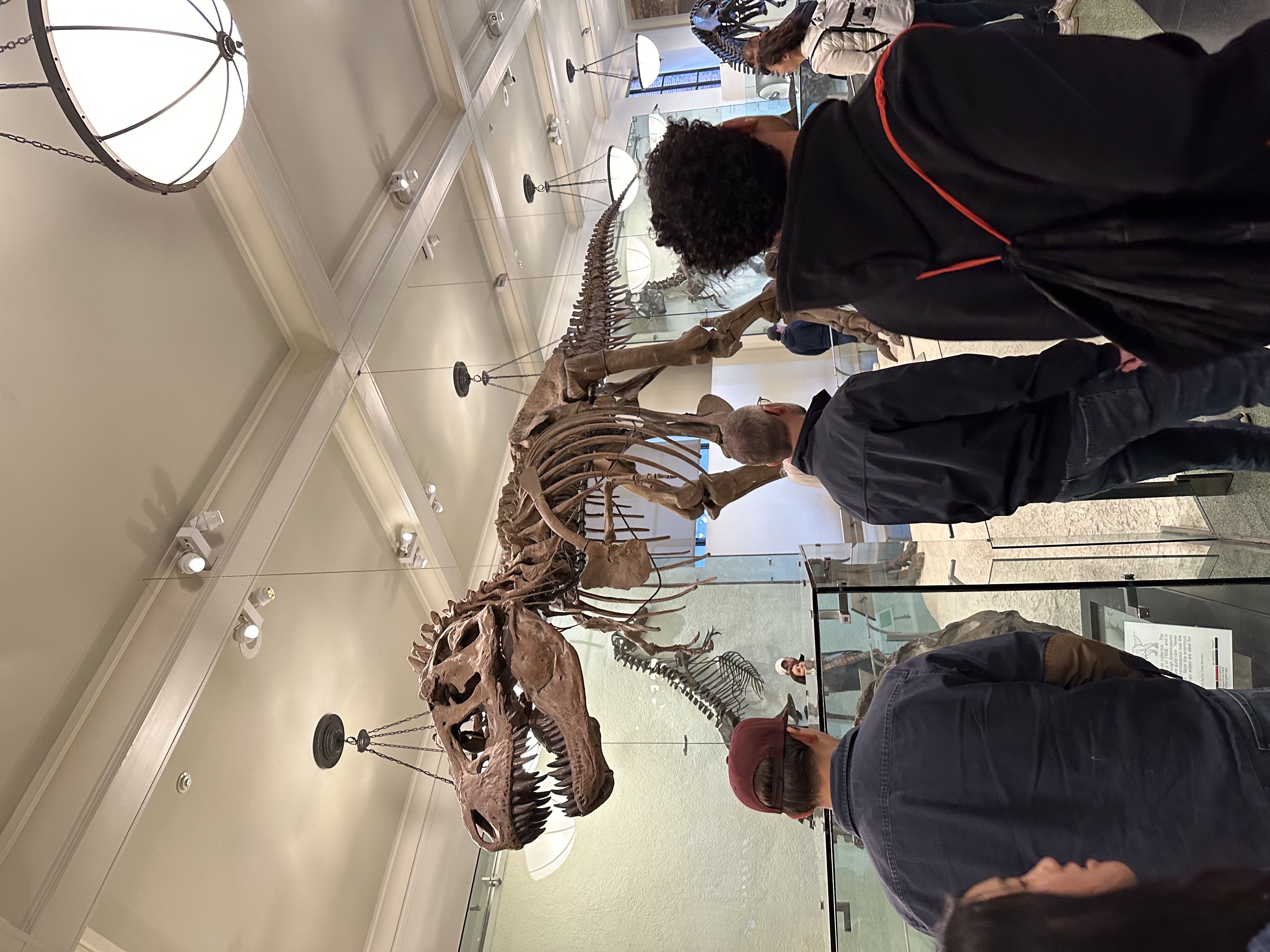Date: November 16th, 2024

T.rex
Concerning the Fossil Halls: The fossil hall is organized phylogenetically (by evolution) and family tree. They use posters to state the family name and every similar species shared one or two major branches. Additionally, they also showed the anatomy of different species and Dr. Holtz pointed out evolutionary trends in skulls. I found the Patagotitan to be interesting because it was the largest land dinosaur and showed that dinosaur legs grow under instead of outwards. However, the dinosaur was incorrectly labeled as diplodocus. Another interesting detail was that all carnivores were bipedal throughout its history. I found the Allosaurus to be interesting because it was the top predator during its time. One feature of the exhibit that could be updated is the family tree, in which some branches are outdated. One way newer information might be conveyed is through digital tablets that interact with users and provide up-to-date information on new paleontology research/discoveries. A challenge with this change will most likely occur with finding and linking relevant paleontology updates to the tablets.
Concerning the Collections Core: Coral is dried for display but has to be preserved in special solvents to keep its soft tissue (the shell is dried out). They are collected via expeditions or donations by amateur collectors. Camarasaurus vertebrae are collected through quarries and are preserved by cleaning and filling in gaps to stabilize the vertebrae. This specimen is useful because it helps scientists learn about animal biology and identify new species. One question that is considered when collecting specimens is: Will it damage or disrupt its surrounding ecological environment?
Self-Guided Observations: We went to the Hall of Asian Peoples, and it was organized circularly with the center consisting of the Buddhist religion and Japan. In the Malaysian section, one item was a poison-coated wood blade that was used in preparing dart poison. In the Chinese section, Mandarin clothes were worn with badges indicating official rank until the fall of the monarchy in 1912. Lastly, musical instruments were invented by Emperor Fu Hsi around 2953 BC with 72 different instruments in total. Some instruments were the trumpet, reed organ, gong, and castanets. I felt like most specimens conveyed a solid amount of information that I was looking for.
Space Show: The title was Worlds Beyond Earth and its theme focused on cosmic discovery and the future of human space exploration. Some of the images in the presentation seemed to be based on real observational data while some others seemed to be designed by a special effects studio. One thing that struck me was that Mars once had underground aquifers of liquid water, which had the opportunity to form life, but they didn't last long enough.
General Thoughts: I noticed that there were elevators and ramps to ensure efficient mobility for all visitors. There were also signs and guides in multiple languages to accommodate its diversity of international visitors. Lastly, I saw multiple benches in different halls for people to sit down and relax as well as different cultures' music in their respective halls.


